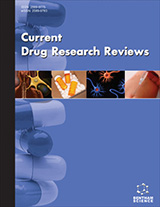Abstract
Background: Patents and exclusive rights on reference biologics contribute to the emergence of biosimilars. Regulatory bodies, such as the Food and Drug Administration (FDA), World Health Organization (WHO), and EMA (European Medicines Agency) for assessing clinical safety, effectiveness, and consequences between biosimilars and reference medications, have established guidelines. Since generic small molecules from reference can be easily swapped, biosimilars cannot be used interchangeably and may not always indicate interchangeability due to highly restrictive properties. It can be replaced with a reference without the healthcare provider's help under the interchangeability context.
Objective: The purpose of our study is to analyze and compare evidence-based clinical safety, therapeutic potential, and importance (outcomes) of several biosimilars with their references along with clinical uses in chronic diseases.
Methods: Through a comprehensive systemic literature review of more than 100 articles involving medicinally important drugs whose bio-similarity works optimally, safety-efficacy parameters have been analyzed. Analysis of biosimilar usage, approval, and safety-efficacy aspects are majorly focused upon herein in this review.
Results: From this systemic review, it can be stated that the majority of biosimilars are clinically and statistically equivalent to their originators. As biosimilars have good safety-efficacy aspects with lower prices, their utilization can be more encouraged, which was already done by the FDA with the establishment of a public online database entitled "Purple Book," which includes all information regarding biological drugs.
Conclusion: To conclude, we suggest widespread use of high-grade biosimilars in clinical practice, maybe via changing, exchanging, or switching, with appropriate clinical monitoring and pharmacovigilance to improve patient accessibility to modern medicines, as it provides similar efficacy and safety parameters across all the accumulated clinical trials and studies.




























